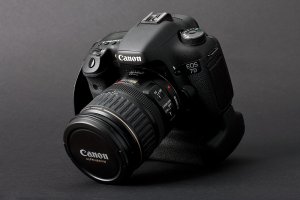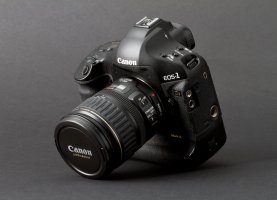Camera pics
- Thread starter Okiewan
- Start date
You are using an out of date browser. It may not display this or other websites correctly.
You should upgrade or use an alternative browser.
You should upgrade or use an alternative browser.
High Lord Gomer
Poked with Sticks
- Sep 26, 1999
- 11,788
- 35
Ignorant question here...
I like the shadows but would it normally be preferable to have some additional lighting so that some of the areas aren't completely back when they are in the shadow?
I like the shadows but would it normally be preferable to have some additional lighting so that some of the areas aren't completely back when they are in the shadow?
- Thread starter
- #4
Not ignorant.. well, maybe. :p
Depends on what you're "shooting for".
Product shots for catalogs, etc., you want less shadow (certainly for products printed on white backgrounds). You still need to keep the light source coming from one general direction, as that's how humans see things... i.e; that big light bulb in the sky. You may not realize it, but that kind of artificial lighting is what makes stuff look more real to you, adds dimension, allows the details to show.
Example is the textures that show-up in both shots; the details in the knobs, etc., only show because there is a light side and a shadow side. You control how much you want this to show with the amount of light, reflector / fill cards, etc., and that includes reducing shadow on the off side.
Example... see the brightly lit area just above the Canon logo on the second image? It's slightly hot, but not blown out. See the area just to the right of that? You can see the detail in the finish. Had the camera been lit more evenly it would be difficult to keep that detail.
From there go more to the right... shadow intensity shows the curves of the body. Fill light on that side would lesson that effect, make it way less dramatic, and "drama" was the goal. But yes, ultimately, it could have been filled some from the right and for sure would have been if it was for the mfg.
In this case I wanted a little more real. It's just another product shot if I shoot it the way I have to so many products. I'm not the mfg that wants every detail to be visible, as if the consumer has never seen the item before.
I wanted the shot to look like the actual camera, sitting in an actual / natural lighting environment, as you'd see it if it weren't sitting on a set ready to be shot :)
I started out the way most do, reading the books and setting up a three light explosion, "key" light and two fill lights from left and right, nice even light. Nice even light that flattens the product and takes away a LOT of detail. Then the studio brought in a "real" photog, paid for his time and got me on the right path.
So yeah, stuff can be shot a lot of ways, just depends on the goal.
Depends on what you're "shooting for".
Product shots for catalogs, etc., you want less shadow (certainly for products printed on white backgrounds). You still need to keep the light source coming from one general direction, as that's how humans see things... i.e; that big light bulb in the sky. You may not realize it, but that kind of artificial lighting is what makes stuff look more real to you, adds dimension, allows the details to show.
Example is the textures that show-up in both shots; the details in the knobs, etc., only show because there is a light side and a shadow side. You control how much you want this to show with the amount of light, reflector / fill cards, etc., and that includes reducing shadow on the off side.
Example... see the brightly lit area just above the Canon logo on the second image? It's slightly hot, but not blown out. See the area just to the right of that? You can see the detail in the finish. Had the camera been lit more evenly it would be difficult to keep that detail.
From there go more to the right... shadow intensity shows the curves of the body. Fill light on that side would lesson that effect, make it way less dramatic, and "drama" was the goal. But yes, ultimately, it could have been filled some from the right and for sure would have been if it was for the mfg.
In this case I wanted a little more real. It's just another product shot if I shoot it the way I have to so many products. I'm not the mfg that wants every detail to be visible, as if the consumer has never seen the item before.
I wanted the shot to look like the actual camera, sitting in an actual / natural lighting environment, as you'd see it if it weren't sitting on a set ready to be shot :)
I started out the way most do, reading the books and setting up a three light explosion, "key" light and two fill lights from left and right, nice even light. Nice even light that flattens the product and takes away a LOT of detail. Then the studio brought in a "real" photog, paid for his time and got me on the right path.
So yeah, stuff can be shot a lot of ways, just depends on the goal.
High Lord Gomer
Poked with Sticks
- Sep 26, 1999
- 11,788
- 35
Cool...thanks for the explanation!
High Lord Gomer
Poked with Sticks
- Sep 26, 1999
- 11,788
- 35
I did...I didn't understand all of it, but I read it.
Similar Topics
- Replies
- 6
- Views
- 5K
- Replies
- 12
- Views
- 2K
FRESH VIDEO
-
Was Year Two of SMX an Improved Series? | Lewis vs. Kellen: More Than Moto Ep. 33
Sat, 28 Sep 2024 15:41:06 CDT
-
Phil Nicoletti and His Dad Look Back On His Racing Career After Final Moto
Sat, 28 Sep 2024 12:00:07 CDT

